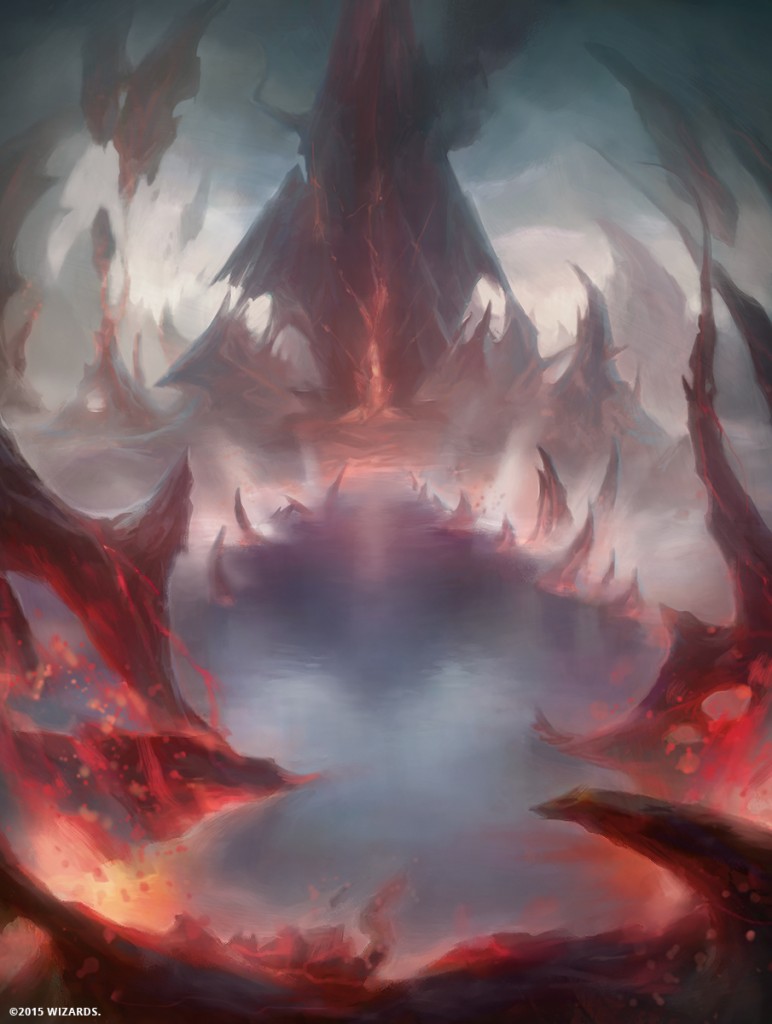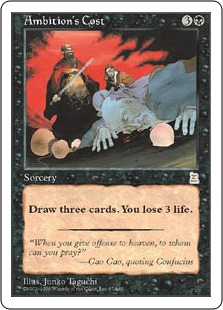Are you a Quiet Speculation member?
If not, now is a perfect time to join up! Our powerful tools, breaking-news analysis, and exclusive Discord channel will make sure you stay up to date and ahead of the curve.
Welcome back, readers! Today I'm continuing my series on the concepts needed to have a strong foundation with regards to Magic: The Gathering finance and/or speculation. The past two weeks I covered risk and value. Now we need to look at cost.
"Who wishes to fight must first count the cost."
-Sun Tzu
There are many types of cost associated with business.
- Direct Cost - These are the costs that tend to be easy to figure out. If you buy a card for $5 the cost to you was $5.
- Indirect Cost - These are also referred to as "hidden costs."
- Fixed Costs - These are costs you know you'll incur. If you own a store front then you know you have to pay your rent/lease every month on a certain date. This is a fixed cost.
- Variable Costs - These are costs which can change over time. One of the best examples are your store utilities (power, water) which are typically calculated based on usage and vary from month to month.
- Relevant Costs - These are costs that actually matter to your business. Paying employees, buying collections and advertising are all relevant costs.
- Irrelevant Costs - These are costs that don't actually matter and are often "phantom" costs. A good example of this might be maintenance costs on the old computer you're likely to replace soon (as you're more likely to just replace it when the first thing goes wrong than maintain it for a bit then replace it).
- Actual Costs - Costs that you have previously paid.
- Budged Costs - These are expected future costs, like next month's rent or preparing for the next set release.
Now that we've gone through the different types of cost associated with business, let's compare them and go a little more in depth.
Direct vs. Indirect Cost
This is likely one of the most important differences to understand. As I stated earlier, direct costs are usually very obvious and they aren't hard to track and understand. If you have someone contact you and say they have a collection they want to sell for $500 then you know the direct cost is $500. But the indirect costs can be substantial. What are they?
Cost of transporting the collection. If you have to drive 40 miles to their house to pick up the collection and your car gets 20 miles to the gallon, then even before deciding whether or not to buy the collection you've already invested 4 gallons of gas in it (about $8 with today's prices in the US). You're also putting additional wear and tear on your car, something many of us don't think about.
There is a reason the IRS pays a mileage rate to employees when they have to use their personal vehicle for official business. The current mileage rate here in the US is $0.54 per mile. That rate is much higher than the cost of gas, which shows the US government has factored in the need for oil changes, new tires, regular maintenance, etc. This should emphasize that vehicle wear and tear is definitely not an indirect cost you want to ignore.
Now, the US government rate does include the value of gas in it. So in this instance if you drove a total of 80 miles (40 to get there and 40 to get back) you've already sunk $43.20 into the collection.
Cost of sorting the collection. If you have employees whose job it is to sort, then however long that process takes is another indirect cost of acquiring it. If you pay your employees $9 an hour and they can sort about 1000 cards an hour, and the guy said his collection is 10,000 cards, that's an additional cost of $90 for sorting.
Cost of grading the collection. While this can often be done during the sorting process, if you have only specific people who do your grading (as opposed to those who only do sorting) there is an additional cost of their time. Now, you're unlikely to grade everything, but you might require a grader to go over the top 10% of what you picked up. This might take an hour or so and they are likely to make more than the sorter so you could potentially be looking at another $15 towards the collection.
Cost of adding it into your store's inventory. If you sell these cards online you also need to add them to your inventory. Again assuming you only put up the top 10% of the collection (that's been properly graded now) you are likely to have another $15 (or an hour of time) putting these new cards into your online inventory (again, I'm assuming the person who does this gets $15 an hour).
When we look at the total cost to buy this collection we have to add up both the direct and indirect costs. So the total collection purchase is now costing you: $500 (direct cost) + $43.20 (indirect travel cost) + $90 (indirect sorting cost) + $15 (indirect grading cost) + $15 (indirect inventory management cost) = $663.2. That's 32% in indirect costs.
You need to respect that these costs will "eat away" at your profit from flipping the collection. That's why it's important not only to understand these costs, but also to estimate them up front. By doing the legwork and getting as much information from your perspective seller ahead of time, you can truly figure out if it's worth your time. This is especially important this day in age when so many sellers look up the retail prices and expect to get that for their collections.
It's also critical to factor these indirect costs in when doing your card pricing. In this example, flipping the $500 collection for $650 doesn't sound too terrible on paper (if you can do so relatively quickly). If you didn't know your indirect costs you might be perfectly content thinking you made a 30% profit on the collection, when in fact you lost 2%.
Fixed Cost vs. Variable Cost
As I noted earlier, a fixed cost is one that you know and can ideally plan for (in the future). You can often budget for these so ideally you shouldn't have to worry about them as much.
Variable costs change. In some cases you can generally budget knowing they exist (you know you'll have a power bill every month) but without knowing the exact cost it makes budgeting difficult.
A great example is when you have a heat wave in the fall. Typically fall weather is either cold or mild so your store's air conditioning unit sits idle. If you have a heat wave at an unexpected time your power bill might be considerably higher than you anticipated (I know personally that during the summer my power bill tends to double when compared to the fall or winter).
In order to account for variable costs it's often important to build up your store's "emergency savings." That way when these types of things occur you aren't eating Ramen noodles six nights in a row (unless that's your thing, in which case at least your grocery bill is only like $10).
Relevant Cost vs. Irrelevant Cost
This one should be pretty self-explanatory thanks to the naming convention, but as a business you really only want to focus on and pay relevant costs. Now an irrelevant cost is typically associated with some specific decision---for example if your store unfortunately picked up a couple of fake cards. Those are sunk costs and are irrelevant to whether you buy the next collection you see, though you can clearly learn from this mistake and take a more careful look at what you pick up.
Actual Cost vs. Budgeted Cost
Actual cost is the cost you've paid in the past. Last month's rent is an actual cost. You know exactly what that was (or you should). A budgeted cost (as I mentioned above) would be next month's rent. It's likely to be the same as last month's rent, but rent prices do go up. The major importance of budgeted costs is that if you don't track your money well and plan how it'll be spent, then you often waste it or lose it---neither of which is good for a business.
Conclusion
Most actual business costs will fall into several of the categories above. Typically they are grouped together so that they can be compared against others in a similar group. The most important distinction to keep in mind is that between direct and indirect costs. I've seen a lot of small businesses miss, ignore or misunderstand indirect costs, while the owners end up wondering why they can't seem to turn a profit. Make sure you know everything that you're investing in a given decision.






